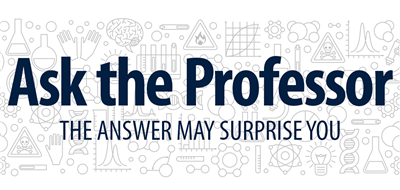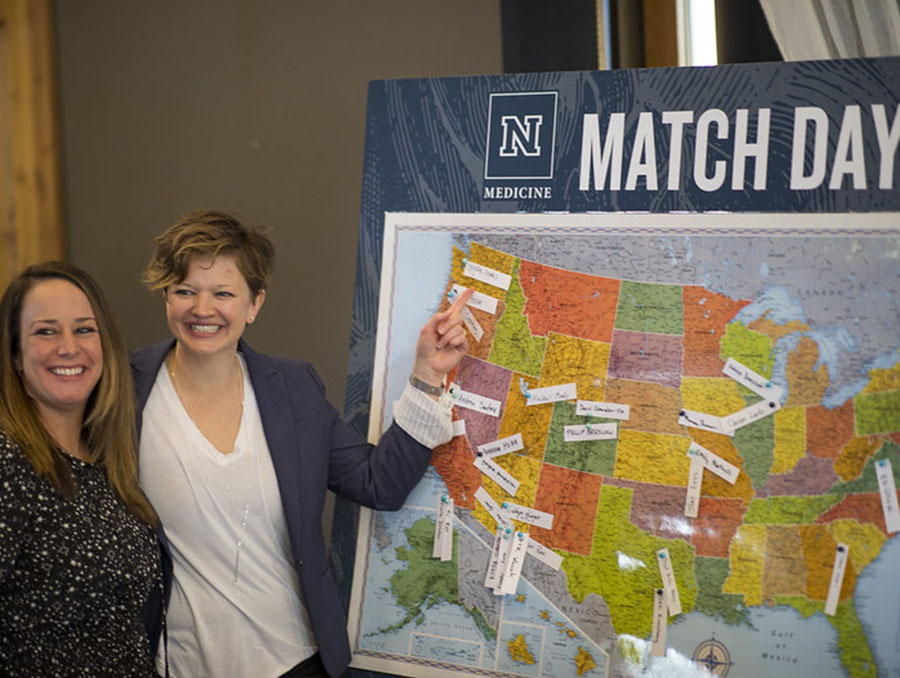
UNR Med graduating fourth-year medical students are scheduled for their Match Day next Friday, March 20. In honor of that ten-day countdown, here are ten things you should know about Match Day, so you can celebrate along with them.
- First, what is Match Day? Graduating from medical school is really just the beginning—not the end—of medical education. After attaining their medical degree, newly-minted doctors have to pursue at least three years, and sometimes as many as seven or eight years, of additional training in a specific specialty. Residency training, or what we call graduate medical education (GME), is where physicians really learn the knowledge and skills to be a fully-trained and independent physician. Match Day is when they find out where that training will take place.
- How do students decide where they want to train? Many factors influence where students apply for residency training, including special clinical interests, program reputation, family considerations, climate, geography, and recommendations from colleagues and advisers. A student chooses a specialty during medical school, and then enters the grueling process of applications and interviews with as many as 20 residency training programs in that specialty, occasionally even more.
- The residency matching process is a bit like speed dating (except not as fast!). There are nearly 12,000 accredited residency and fellowship training programs in the U.S., and each year, nearly 20,000 students graduate with M.D. degrees from U.S. medical schools. After the application and interview season (roughly October through January each year), all training programs create a rank list of their desired applicants, and all applicants create a rank list of their desired training programs. The lists are submitted in February.
- Then a really large and fast computer gets involved (fortunately, backed by a Nobel Prize). A complicated, Nobel Prize winning algorithm matches student and program interest, with a bias toward favoring the student’s choice. The result is that most—although sometimes not all—students match with a specific program where they are then committed to start training in June. About 75% of students received one of their top three choices.
- Occasionally medical students get married during medical school—sometimes to each other! The system can handle that, too. A special feature of The Match process is a “couples match,” where even more complicated algorithms balance the training objectives of two students, usually with different specialty choices, who want to end up in the same hospital or at least the same city.
- Not everyone matches the first time around. The intensely competitive nature of the residency application process, especially for certain specialties, and the increasing number of medical school graduates, means that some students do not match. At the same time, some residency slots do not fill. There is a structured process for matching the remaining students to available spots in time for the big Match Day celebration on Friday.
- The results of The Match are released at the same time – noon Eastern time – everywhere in the U.S. One of the many benefits of living in the West is that UNR Med students receive their Match results at 9:00 a.m., thus relieving them of one or more hours of anxiety experienced by students in the rest of the country.
- Every medical school has developed its own very personal way of releasing the results. When I was in medical school, each result was pulled out of a bowl, the student was called up on stage, and we read the result aloud. The range of emotions was, shall we say, quite wide-ranging! We have a lot more fun in releasing the results at UNR Med, with more of a private reveal connected to a pop culture theme that’s kept secret until the big day (think about having your results incorporated into the wrapper of a Willy Wonka chocolate bar, folded into Harry Potter’s Golden Snitch or written in blacklight ink across a Star Wars lightsaber!).
- We can’t keep everyone in Nevada. UNR Med students have traditionally had great success matching in top programs, but the results are bittersweet for us. We are proud of our students who represent UNR Med so well to academic medical centers across the country, but we wish we could keep them all in Nevada. Our state just doesn’t have all the specialty and subspecialty training programs that some students seek. We are working hard to expand that selection, especially in primary care. The Governor’s GME Task Force has been highly influential in the past six years in providing start-up support for these new and expanded programs.
- I have given the same Match Day advice to students every year just before they learn the results. On the one hand, The Match has everything to do with where a physician’s career will lead, opening up a whole series of opportunities and choices specific to that program. On the other hand, The Match has absolutely nothing to do with the success of a physician’s career, because every single result that is revealed in that Willy Wonka chocolate bar opens up a world of possibilities. It all depends on the student and how they take advantage of the next phase of amazing medical education that they are about to enter.
All physicians remember their Match Day. It is a time of enormous excitement, anxiety, satisfaction and anticipation. There was a clear path for me from medical school at the University of Michigan to residency training at the University of Utah that eventually lead to my arrival at UNR Med in 2011. We look forward to another year of outstanding Match Day for UNR Med students on March 20, the results of which will take them to growth, learning and success they cannot yet imagine.












